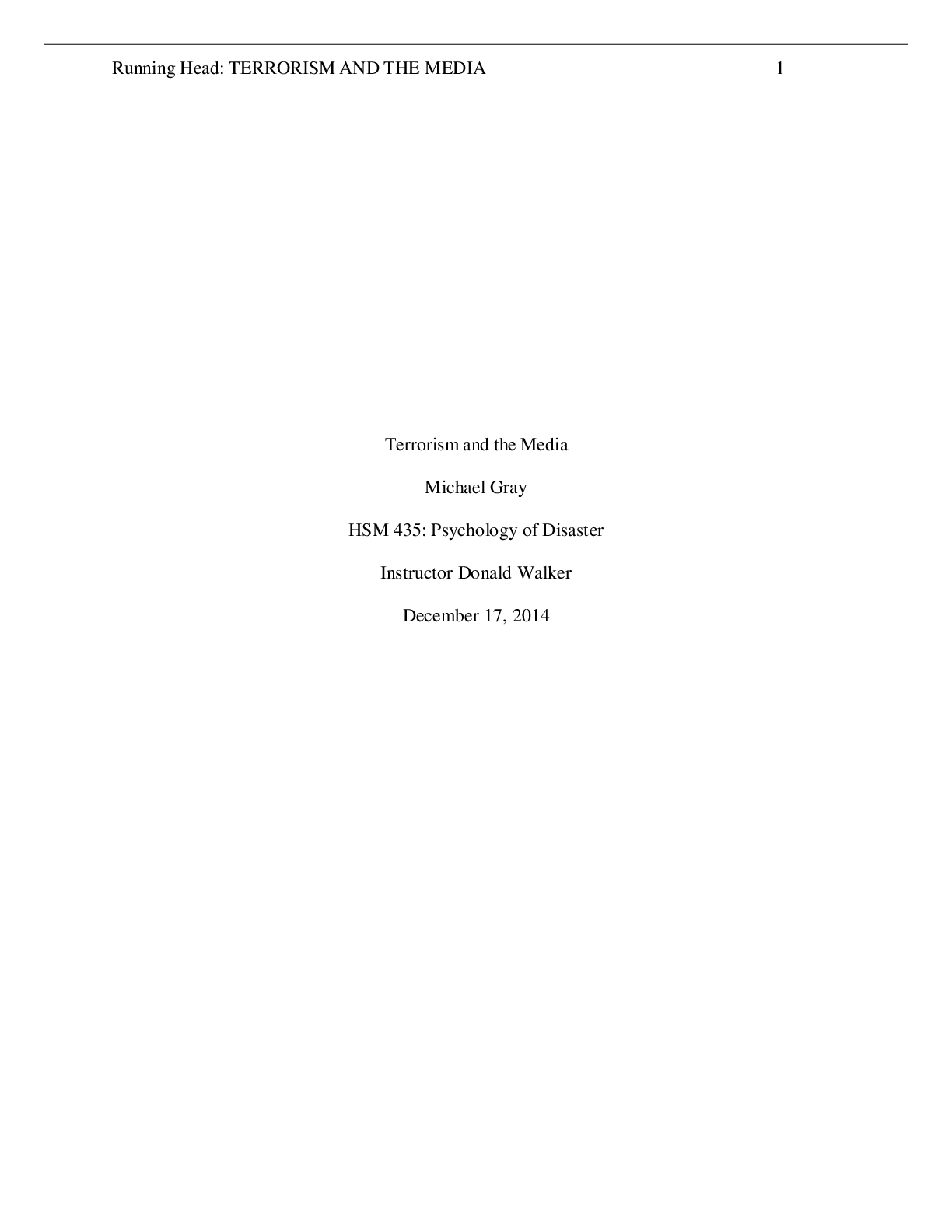TERRORISM AND THE MEDIA 2
Terrorism and the Media
Terrorism is not new. It is as old as the middle ages and a tactic utilized by dissidents,
individuals, revolutionists, and terrorist organizations. Historically, terrorism has employed
brutal acts of violence to create panic and strike fear in the populaces. Death, mass causalities,
property damage, disruption of government services and economies, disruption of daily activities
and livelihoods are goals of terrorism. In addition to the visible damage caused by terrorism,
victims exposed to terrorism, directly or indirectly, experience sorrow, grief, panic, and fear and
other psychological issues. If terrorism is not new and has been around since the Middle Ages,
then what and why is it a focus in today’s world? Technology and the media are at the center of
why terrorism is the focus in today’s world. While the media is critical as a source of
information, media broadcasting of terrorist attacks can lead to psychological issues for
individuals and children.
Sixty years ago acts of terrorism may have made the front page of the newspaper and
been mentioned on the nightly television and radio news broadcast produced by ABC, CBS, and
NBC Television. Pictures, if a camera was present, would be black and white. Vivid, color
images of the terrorist act were not available. Terrorism was just as violent and deadly sixty years
ago; however, it did not affect individuals in the same manner as it does in our modern day
society. Sixty years ago television news was broadcast on three channels for thirty minutes at the
beginning and ending of the broadcast schedule which generally ran from 6:30 pm until 11:00
pm (TV Guide, 1954). The affects of terrorism has evolved over the years as the media has
evolved.
Gone are the days of three television stations and black and white photographs.
Technological advances, the Internet, the world-wide web, 24 hour news networks, color
TERRORISM AND THE MEDIA 3
television, social media, pocket color cameras are ready available to document anything that
occurs. In our modern day society, this has resulted in terrorism being a major news item.
Terrorism is used to influence political, social, and religious causes. What better avenue is
available for terrorists publicize their message than the media? As noted by Andrew Silke (2003),
terrorist attacks involve brutal acts of violence or threats of violence with the intent “to influence
public and government opinion on political or societal issues” (Silke, 2003, pg. 78). The world
watched in shock, fear and panic as the news media covered the September 11, 2001 terrorist
attacks on the World Trade Centers in New York City and the Pentagon in Arlington County,
Virginia.
The vivid, graphic pictures of planes flying into the World Trade Center buildings and
their subsequent collapse coupled with audio of radio and telephone communications allowed
individuals thousands of miles away from the events to live the experience those individuals in
close proximity to the World Trade Center’s experienced firsthand. Terrorism was entrenched in
individual’s minds for weeks after September 11 with the broadcast news media and print news
media focus on New York City, Arlington County, Virginia, and Somerset County, Pennsylvania.
Media focus on brutal, vicious acts of terrorism is a critical element terrorists are hoping for. As
noted in a 2008 report on Terrorism and the Media, Transnational Terrorism, Security & the Rule
of Law states “Former British Prime Minister Margaret Thatcher, in an often mentioned quote,
called media publicity the “oxygen” of terrorism” (pg. 2). This relationship between the media
and terrorism makes for strange bedfellows.
Regarding the relationship between terrorism and the media, Betty Pfefferbaum of the
University of Oklahoma College of Medicine in Terrorists, Victims and Society: Psychological
Perspectives on Terrorism and its Consequences (2003) states “Competition is fierce as the
Read More


